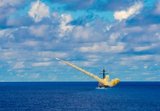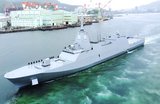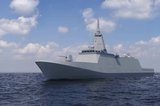Sea Venom firing latest in series of UK-France missile developments
As work continues on the joint UK-France programme to develop a next-generation cruise and anti-ship missile system, the smaller but equally crucial Sea Venom has conducted another firing trial, described as a ‘significant new milestone’ by manufacturer MBDA.
According to a release the firing was conducted on 14 November from a Dauphin test helicopter at the Île du Levant test range, the final development firing for the missile prior to the start of qualification trials in 2019.
In November the UK’s Equipment Plan said that it was ‘likely’ the Sea Venom programme would see a one-year slip, caused by ‘emerging
Already have an account? Log in
Want to keep reading this article?
More from Naval Warfare
-
![Future of the Canadian Patrol Submarine Project is still unclear]()
Future of the Canadian Patrol Submarine Project is still unclear
The Canadian government remains tight-lipped on the timeline and funding required for the next steps of its Canadian Submarine Patrol Project, which should offer improved capabilities for the country’s navy.
-
![Mitsubishi eyes future with Australia’s Mogami selection]()
Mitsubishi eyes future with Australia’s Mogami selection
With Australia’s selection of the Mogami-class for Project Sea 3000, Mitsubishi is investigating local production in the next decade as potential export opportunities emerge.
-
![Thales’ new Sonar 76Nano could equip UK Royal Navy on anti-submarine warfare missions]()
Thales’ new Sonar 76Nano could equip UK Royal Navy on anti-submarine warfare missions
The new sonar is designed to equip uncrewed underwater vessels, with the potential to be used by the Royal Navy for its Atlantic Bastion and Atlantic Net missions.






















